There are so many diode lasers on the market! In this diode laser comparison, I’m looking at seven popular diode lasers so you can see which is best for your own needs, budget, and space!
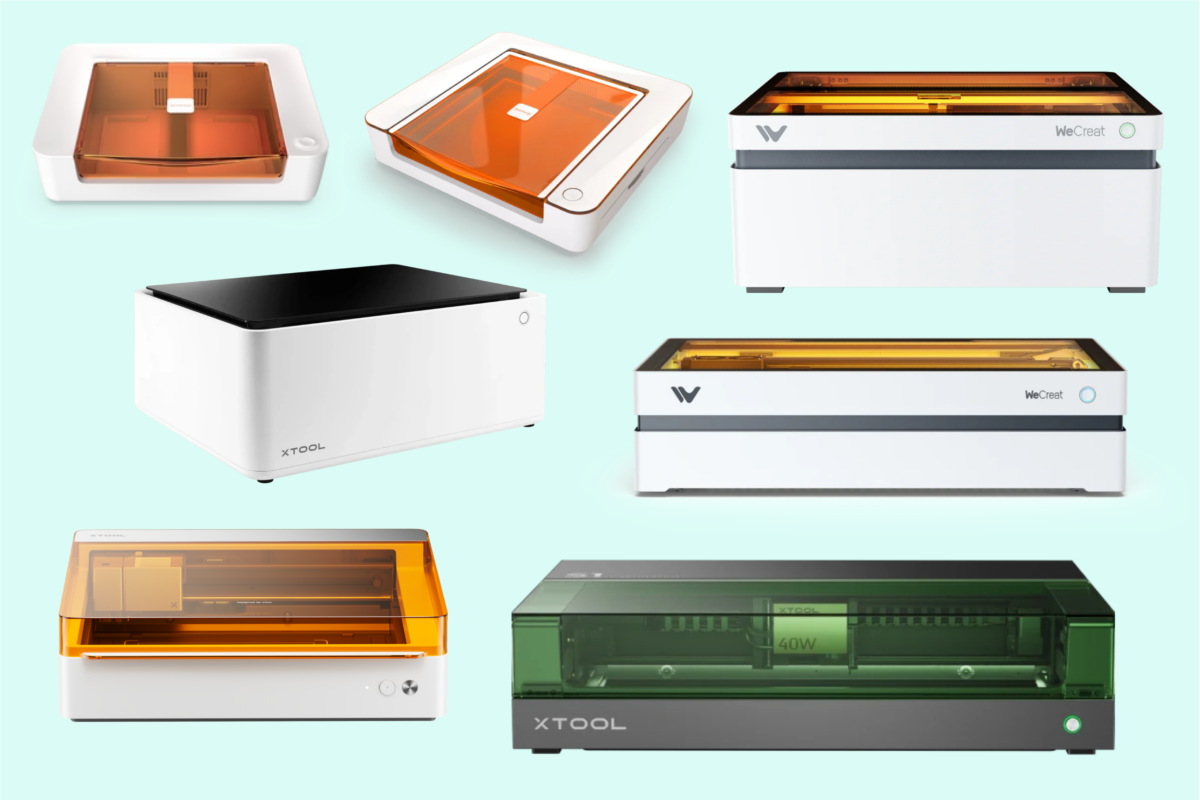
I have reviewed seven diode lasers in the last few years and people are always asking me to compare them or tell them which one’s best. So in today’s post, I’m sharing a comparison between all of the seven lasers I actually own. You may find other laser comparisons out there, but often they are from big tech companies and not from someone who has actually used them extensively!
In this post, I am comparing the following lasers, in no particular order. Click on each one to read my full review of that particular laser:
I want to start out by saying that I don’t think there is a truly bad laser in the bunch. There are things I like more on all of these machines, pros and cons, and all sorts of things you need to consider. Do your research but I don’t want you to feel like you’ve made the wrong choice. Diode lasers are similar, and while there are things that set these machines apart from each other, I don’t think you can go wrong with any of these lasers.
We’re going to go through all of the key factors that are important when choosing a laser, including price and value, safety, power and performance, material compatibility, software, unique features, and which are my overall favorites for different types of users.
Watch the Video
Would rather watch a video of my diode laser comparison? Just hit play below! Or keep reading for a written comparison between all of the machines.
What is a Diode Laser?
Before we get into the diode laser comparison, I want to talk a little about what a diode laser is (and what it is not).
There are several types of lasers on the market, including diode, CO2, infrared, and fiber lasers. What makes diode lasers unique is their “spectrum.” Diode lasers are on the visible light spectrum, somewhere in the “blue” wavelength. The other lasers I mentioned are outside the visible spectrum, in infrared spectrum. These different spectrums dictate what types materials will work with the laser.
This is most apparent with the materials a diode laser can cut and engrave. Because the light is blue, a diode laser will struggle (or fail) cut cut and engrave different types of acrylic, including clear, transparent, most blues, and other colors that have a lot of blue pigment in them. This is because the laser will pass right through the material instead of cutting or engraving it.
You can read more in my post How to Cut Acrylic with a Diode Laser. If you want to cut clear/transparent/blue/etc acrylic, then you’ll need to upgrade to a CO2 laser, like a Glowforge Pro or an xTool P2.
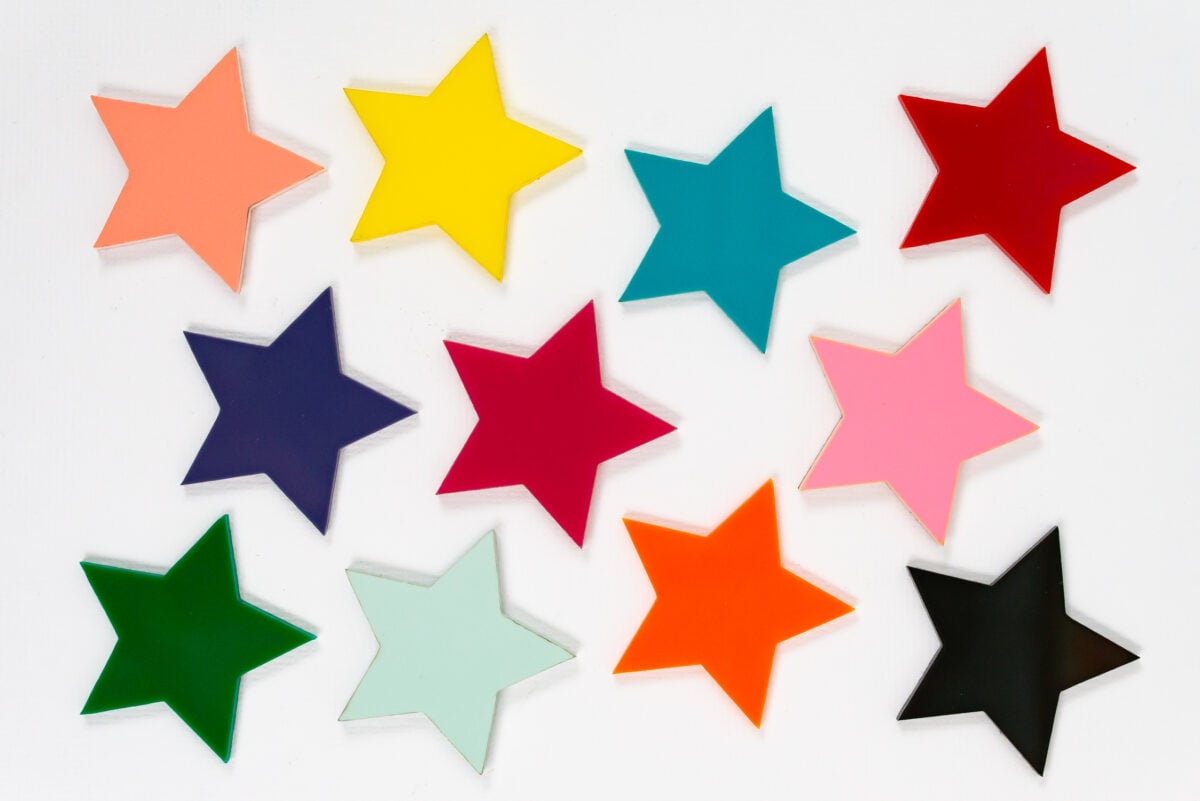
Price
A diode laser is generally less expensive than a CO2 laser, making them more affordable for hobbyists and smaller businesses. Here is the retail value for all of the machines I’m comparing, from lowest to highest. Some of these have different options that will change the price—a lower or higher wattage, accessories, etc, but I am using the base model with the wattage that I own so I can give an accurate comparison.
Keep these prices in mind as we get into the features and capabilities of each of these machines later in this video.
xTool and WeCreat often have sales so you get a laser for lower than I have here. Glowforge rarely puts anything on sale, but occasionally they will have deals on shipping and materials.
- Glowforge Spark – $699
- xTool M1 10W – $999
- Glowforge Aura – $1199
- WeCreat Vision 10W – $1199
- xTool M1 Ultra – $1299
- WeCreat Vista 10W – $1399
- xTool S1 40W – $1999
Setup
I have to say, all of these lasers are pretty easy to set up. The laser companies are getting good about giving clear instructions for how to unbox and set up the laser properly.
I think that overall, the Glowforge lasers are the easiest because they have no additional parts or accessories and they are designed for the very beginner. They are basically ready to go, right out of the box.
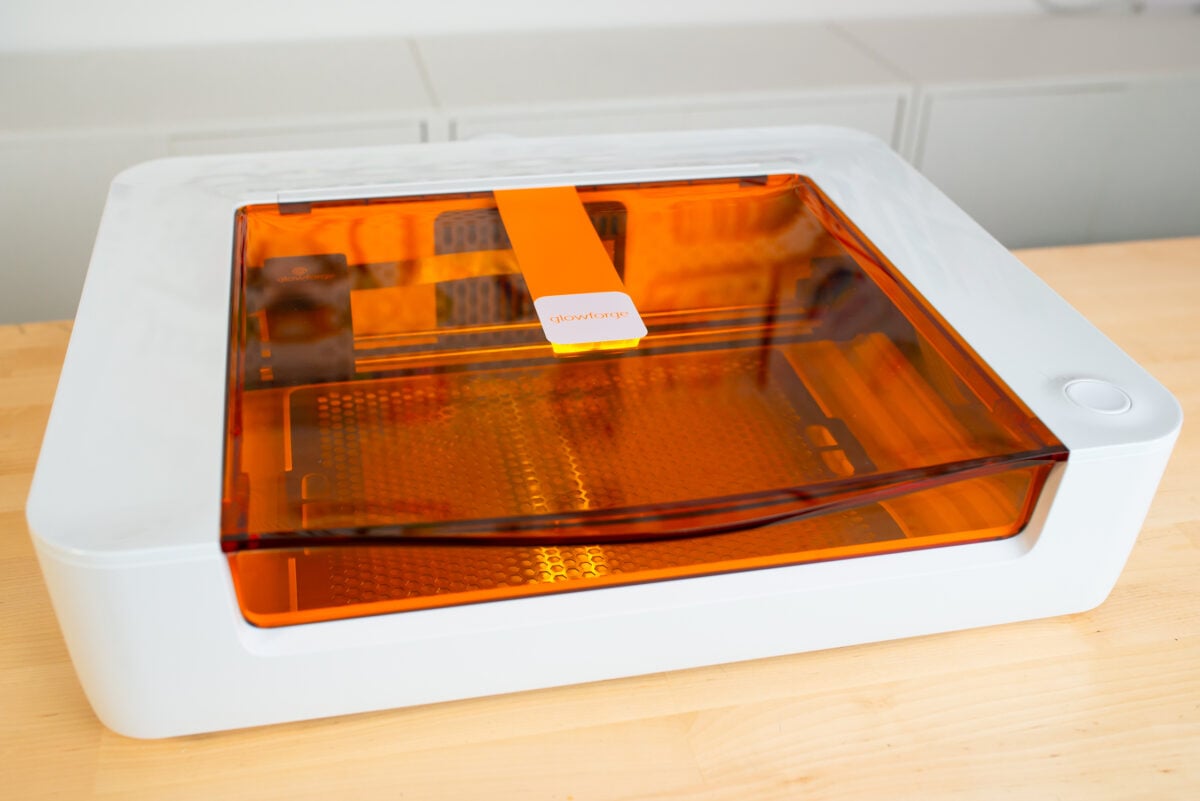
The other lasers on my list are easy, but you’ll often buy them with add-ons like a riser base or honeycomb tray that makes set up a little more involved.
Overall, though, don’t be intimidated by any of the lasers on this list! You can do it, I promise.
Power
Next up let’s talk power and performance. Many of these lasers come with different “wattages” which is basically their power level. The higher the wattage, the faster and more powerful the laser.
- Glowforge Spark – 6W
- Glowforge Aura – 6W
- xTool M1 – 10W
- WeCreat Vista – 10W
- xTool M1 Ultra – 10W or 20W
- WeCreat Vision – 20W or 40W
- xTool S1 – 10W, 20W, or 40W
In my opinion, 20W is the sweet spot for laser power and performance. It is considerably faster than the lower wattage machines, but is less expensive than the 40W machines.
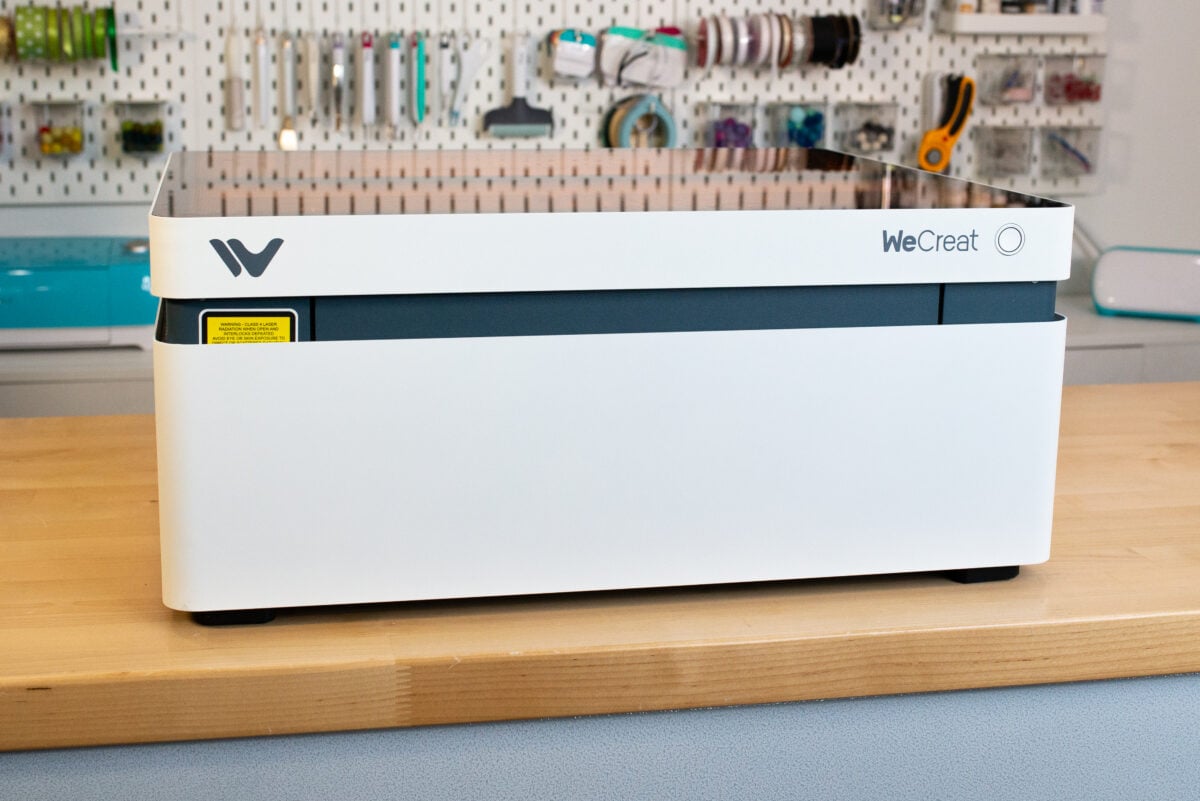
Cutting Speed
Cutting speed is a little hard to compare for a few reasons. Glowforge doesn’t release information on their cutting speed, and cutting speed on the other machines varies based on the intricacy of your designs. So I am giving a general overview of how quickly I think the machines cut in comparison to one another based on my own use.
- Glowforge Spark – slow
- Glowforge Aura – slow
- xTool M1 Ultra – slow
- WeCreat Vista – medium
- xTool M1 – medium
- WeCreat Vision – medium to fast
- xTool S1 – fast
Slow isn’t necessarily bad if you are just using your machine to make small projects. If you want to start a small laser business, however, I highly recommend getting something a bit faster.
Work Area
The size of the material you can cut will also come into play in your decision. If you are fine making smaller projects, a smaller machine will be just fine. But if you want to make larger projects or batch produce smaller projects, you’ll probably want a machine with a larger working area.
- Glowforge Spark – 8″ x 12″
- xTool M1 Ultra – 11.81″ x 11.81″
- Glowforge Aura – 12″ x 12″
- xTool M1 – 15″ x 12″
- WeCreat Vision – 15.75″ x 10.63″
- WeCreat Vista – 16.34″ x 11.42″
- xTool S1 – 19.61″ x 12.56″
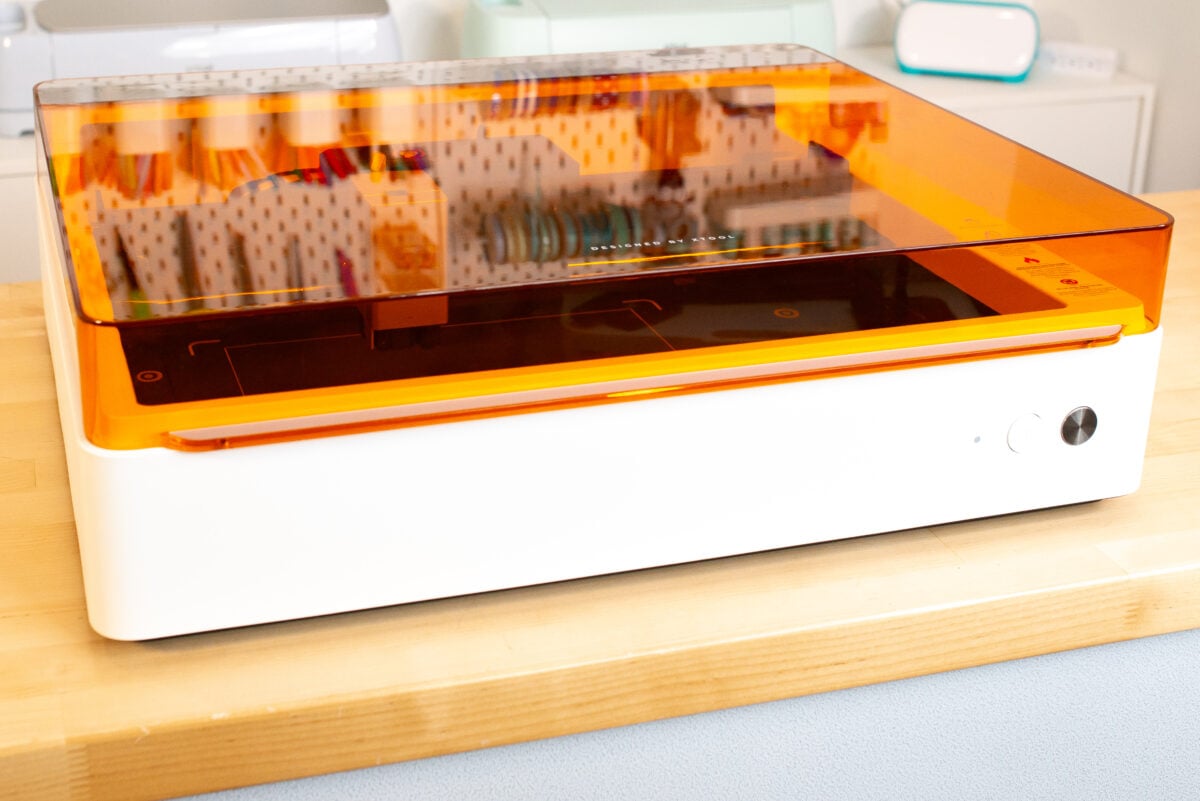
Material Compatibility
Basically all diode lasers can cut and engrave the same types of materials. No matter which laser you choose, you should be able to cut and engrave a wide variety of materials, just some machines will be faster and require fewer passes.
Diode Laser Cutting:
- Wood (including basswood, pine, cherry, walnut, birch, and more)
- Leather
- MDF
- Felt
- Paper
- Some dark opaque acrylic
Diode Laser Engraving:
- Wood (including basswood, pine, cherry, walnut, birch, bamboo, and more)
- Leather
- MDF
- Stainless steel, powder coated metal, painted metal, plated metal
- Some dark glass
- Ceramic
- Natural materials like shale, slate, jade, brick, and marble
- Some dark opaque acrylic
Other Materials
The xTool M1 and the xTool M1 Ultra have additional material processing capabilities not found in most other lasers.
- xTool M1 – blade cutting, including laser-safe vinyl, HTV, cardstock, leather, felt, and fabric. Learn more in my xTool M1 overview.
- xTool M1 Ultra – blade cutting, including vinyl, HTV, cardstock, leather, and fabric. Additional blades including a knife blade for thicker materials, a rotary blade for fabric and felt, a pen for writing, a debossing tool for cardstock, and a printing module. Learn more in my xTool M1 Ultra overview.
Software and User Interface
The laser’s capabilities are one thing, but it’s also nice to have a user-friendly software! Glowforge uses the Glowforge App (on desktop, not a phone app), xTool uses xTool Creative Space, and WeCreat uses WeCreat Make It. Laser software does have a small learning curve as you learn the difference between things like Cut, Score, and Engrave as well as how power, speed, and passes work together. But if you follow tutorials and research your material before processing it, you should have pretty good luck.
Overall, I think xTool has the most robust and easy to use software. When I first got my M1 a few years ago, it was a very basic software, but you can tell they have put a lot of time and resources toward making it a truly capable software. Glowforge has some cool features, but they charge extra to use them, and WeCreat’s software is sort of where xTool’s software was a few years ago.
Camera vs. Pinpoint Positioning
Most lasers use a fisheye lens to take a picture of the material in the bed of the machine so you can see where to place your image. This is fine, but it’s not ideal because the fisheye lens distorts your image a bit, especially around the edges.
WeCreat worked around this in their newer machine, the Vista, by placing the camera inside the edge of the lid. Instead of taking a photo of what’s in the bed of your machine while the lid is closed, you take the photo while the lid is open. This allows the camera to take a photo from much higher up, removing the need for a fisheye. Awesome solution.
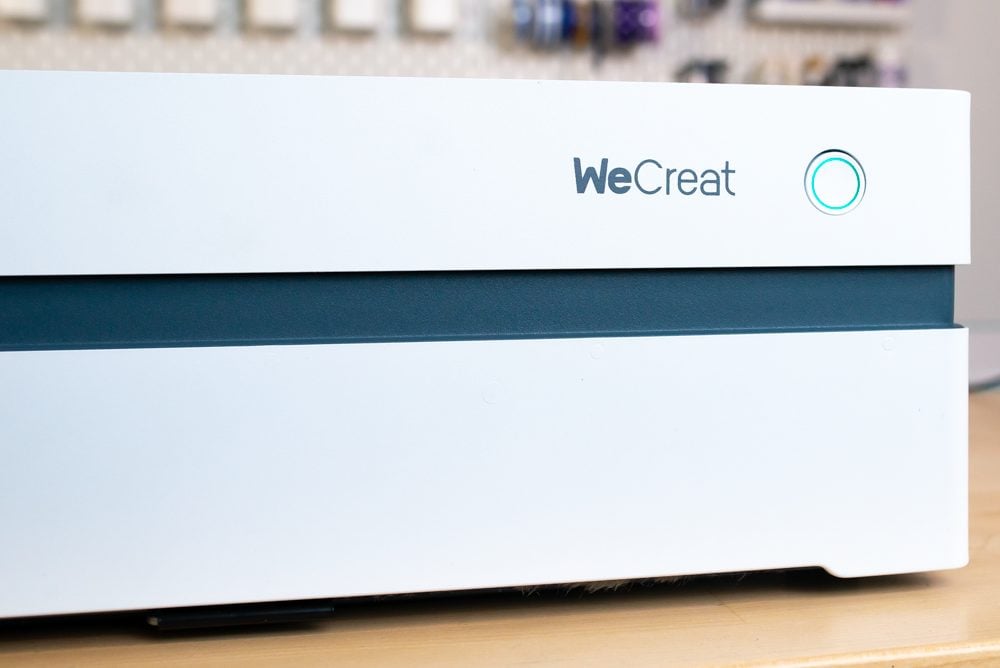
The xTool M1 Ultra and S1 both did away with the camera entirely and use a pinpoint positioning system. Instead of a camera image, you get a red cross symbol on your canvas and that allows you to place your image exactly where your laser head is. Honestly, I LOVE this system. I’ve used it a lot and I think it’s much more accurate than any camera. That being said, there’s a learning curve and some people really do like a camera better.

Here’s what you’ll get with each laser:
- Glowforge Spark – fisheye camera
- Glowforge Aura – fisheye camera
- WeCreat Vision – fisheye camera
- WeCreat Vista – regular camera (process image while lid is open)
- xTool M1 – 15″ x 12″ – fisheye camera
- xTool M1 Ultra – 11.81″ x 11.81″ – pinpoint positioning
- xTool S1 – 19.61″ x 12.56″ – pinpoint positioning
Safety
All of these machines are safe for use in your craft space because they have a minimum number of safety features.
To start, they are all enclosed machines, meaning that they have a plastic or metal enclosure that helps contain the fumes created by the laser as it’s processing your material.
All of them also have a tinted lid, meaning you can look directly at the laser while it’s processing without harming your eyes.
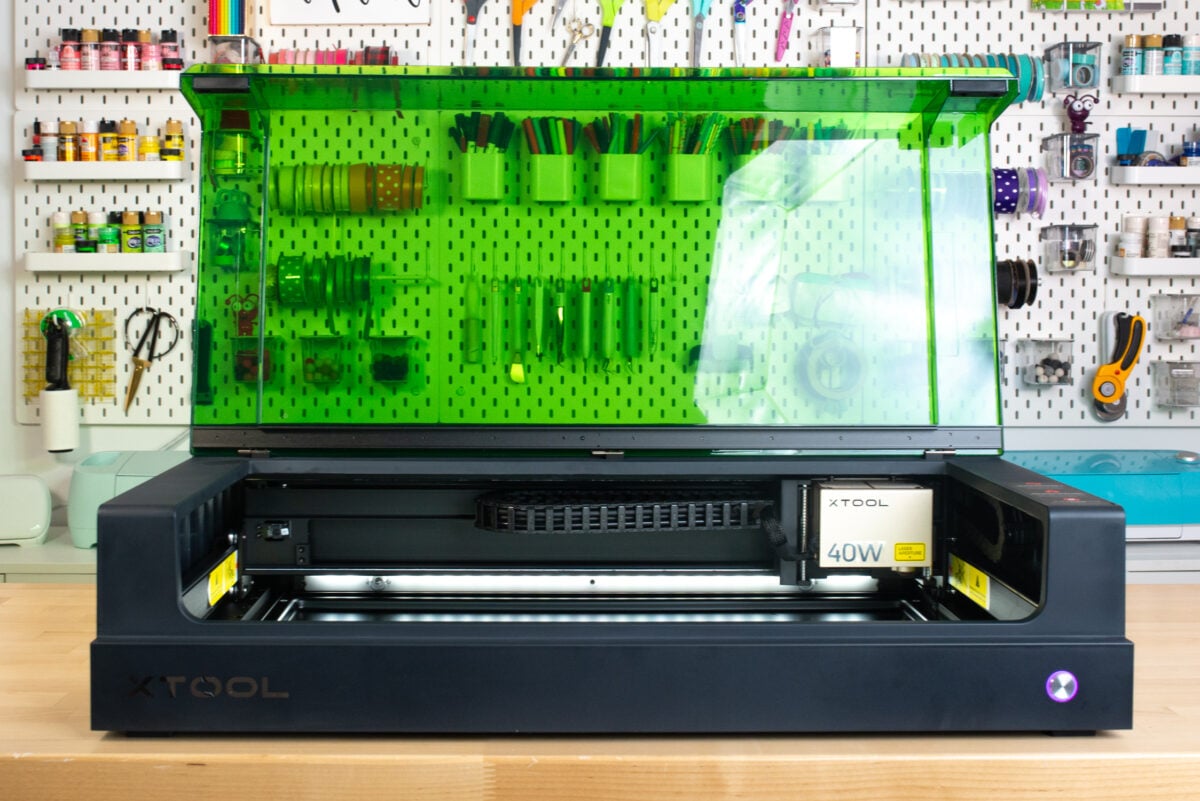
And all of them have an auto-stop feature if you open the lid of the laser while it’s working.
Then there are a few additional safety features that I like on a few of the machines:
- xTool M1 Ultra – USB key that must be inserted for the machine to work, fire detection system that will shut down the laser if it detects a fire.
- xTool S1 – USB key that must be inserted for the machine to work, fire detection system that will shut down the laser if it detects a fire, emergency stop button on the side of the machine.
Venting
All of these lasers need to be vented. When the laser is cutting, scoring or engraving, it is removing material and creating smoke and fumes that need to be removed from the laser. There are two ways to go about this.
Venting Out a Window
All of these machines can be vented out of a window. Just place the end of the vent pipe out of a window, using a blanket or other surround so the fumes can’t get back in. This is free and a great option if you can place your machine by a window.
Using an Air Filter
Each of these companies also makes their own filters. They are called personal filters, fume extractors, air purifiers and more, but they are all generally the same thing. Remember that xTool and WeCreat often have sales, so you’ll almost never pay the prices I have listed below.
- Glowforge Personal Air Filter – the Glowforge filter for the Spark and Aura is really great. It’s small and easy to move around. It only turns on while the Glowforge is processing, so it doesn’t run unnecessarily. It retails for $399. Replacement filters are $129.
- xTool Fume Extractor – xTool has two options. The first is a heavy fume extractor on wheels. You turn it on manually when your machine is running. It runs for $999 and replacement filters are
- xTool Safety Pro AP2 – The second option is brand new, but I do have it thanks to xTool. This is a six-filter system with cyclone action that helps prevent clogging. It’s linked to your machine so it only runs when your machine is running. It costs $999 but the filters are washable and reusable so you have fewer replacement costs. It’s larger and not on wheels, but I think it’s a better buy than the Fume Extractor.
- WeCreat – I don’t actually have the WeCreat fume extractor, but it’s similar to the xTool Fume Extractor. It’s heavy but it’s on wheels so it’s possible to move it around. It is not linked to the processing on the machine so you will manually have to turn it on and off.
One final thing about venting. Most machines have a metal hose clamp to attach the vent pipe to the back of the machine. I hate them all and find them difficult to use. The xTool M1 Ultra, however, has this awesome clip-on vent pipe with an extra filter. It was a million percent easier to install and allows me to remove it easily from the back of the machine for storage. Five stars for this little improvement.
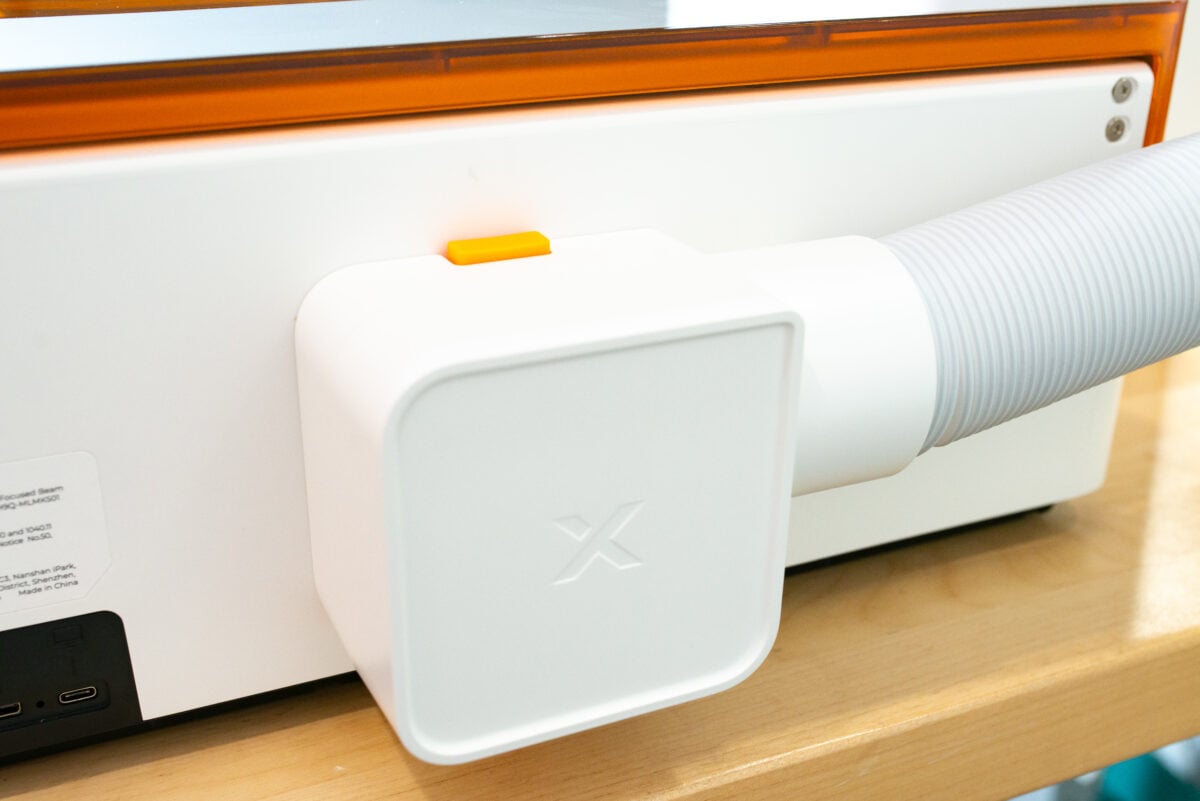
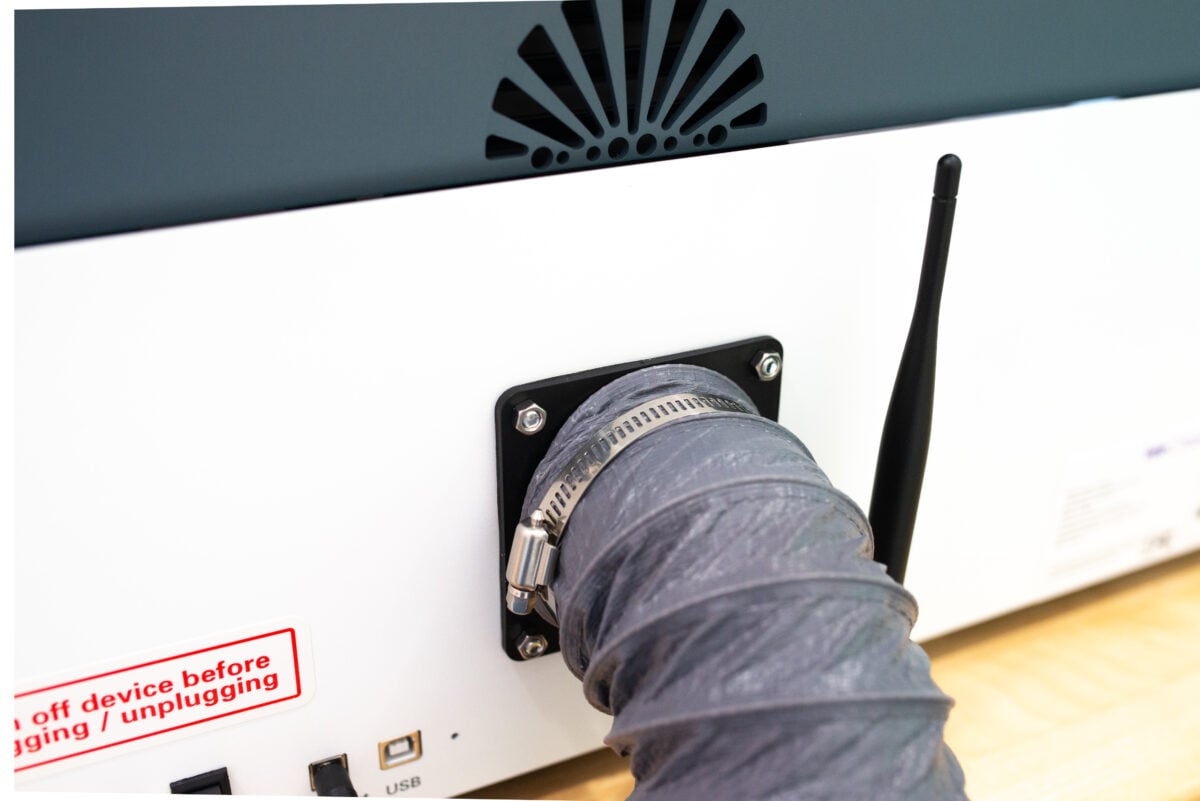
Air Assist
Air assist is another feature that I really like in a laser. This basically blows air on your project as it is processing, reducing charring and fire risk.
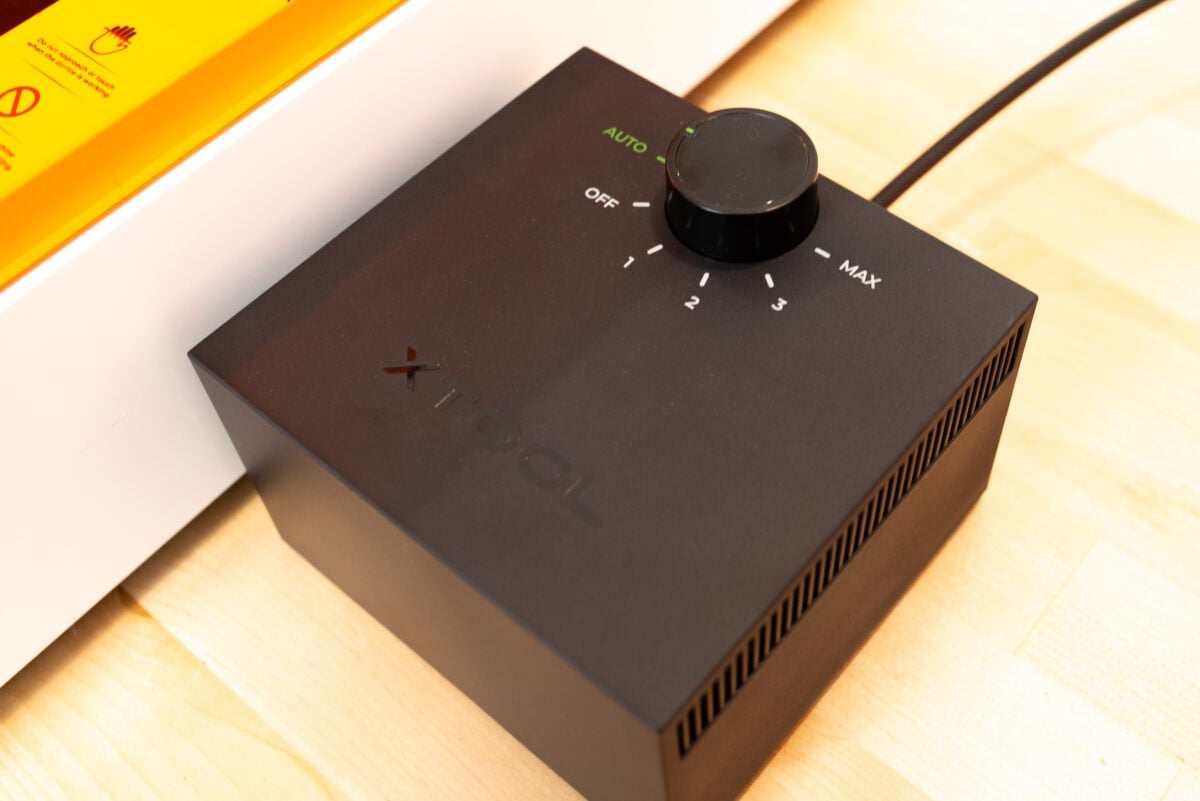
Each of these companies goes about the air assist differently:
- Glowforge Spark – air assist built in
- Glowforge Aura – air assist built in
- WeCreat Vision – air assist separate but included in base price
- WeCreat Vista – air assist separate but included in base price
- xTool M1 – 15″ x 12″ – air assist separate and an add-on cost
- xTool M1 Ultra – 11.81″ x 11.81″ – air assist separate and an add-on cost
- xTool S1 – 19.61″ x 12.56″ – air assist separate and an add-on cost
Unique Features
While each of these machines is a diode laser at its heart, there are unique features of each machine that make them different from the other machines. Here are my favorite unique features of each machine:
- Glowforge Spark – built in air assist, honeycomb tray, small footprint, lowest price.
- Glowforge Aura – built in air assist, honeycomb tray, small footprint, passthrough for larger projects.
- WeCreat Vision – included air assist, auto-rising feature so no riser needed, slate panels for air flow, rotary tool add-on
- WeCreat Vista – included air assist, rotating laser head so no riser needed, slate panels for air flow, rotary tool add-on
- xTool M1 – blade cutting, rotary tool add-on
- xTool M1 Ultra – blade cutting (regular, knife, rotary), debossing, writing with a pen, and printing available (additional modules are extra), additional safety features, easy clip-on vent pipe, riser base add on, rotary tool add-on
- xTool S1 – largest working area, additional safety features, riser base add on, rotary tool add-on, fast enough for small business
Final Recommendations
Like I said at the beginning of this post, I don’t think you can go wrong with any of these machines. They are all capable and relatively easy to use.
For me, my xTool S1 is the machine I head to the most often. It has the largest processing area and I really like the pinpoint positioning system and safety features. Of course, this is also the most expensive machine! If I had to do it over again, I’d probably go for the 20W S1 instead of the 40W S1 that I got and save myself several hundred dollars.
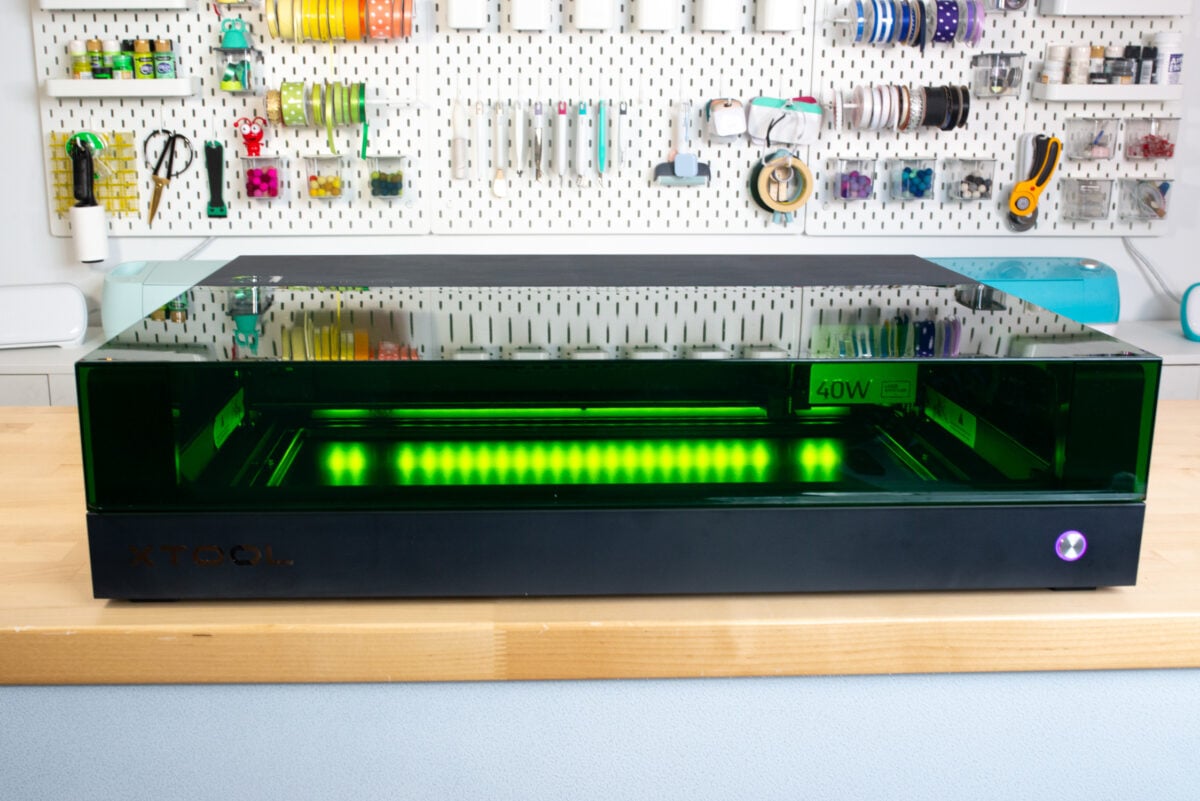
If you are a beginner and just want to be a hobbyist and not expand into a business of any kind, I recommend the Glowforge Spark, or the Glowforge Aura if you want a larger cutting area. They are so easy to set up and Glowforge’s Proofgrade materials make it really easy to make a project without having to do a bunch of testing.

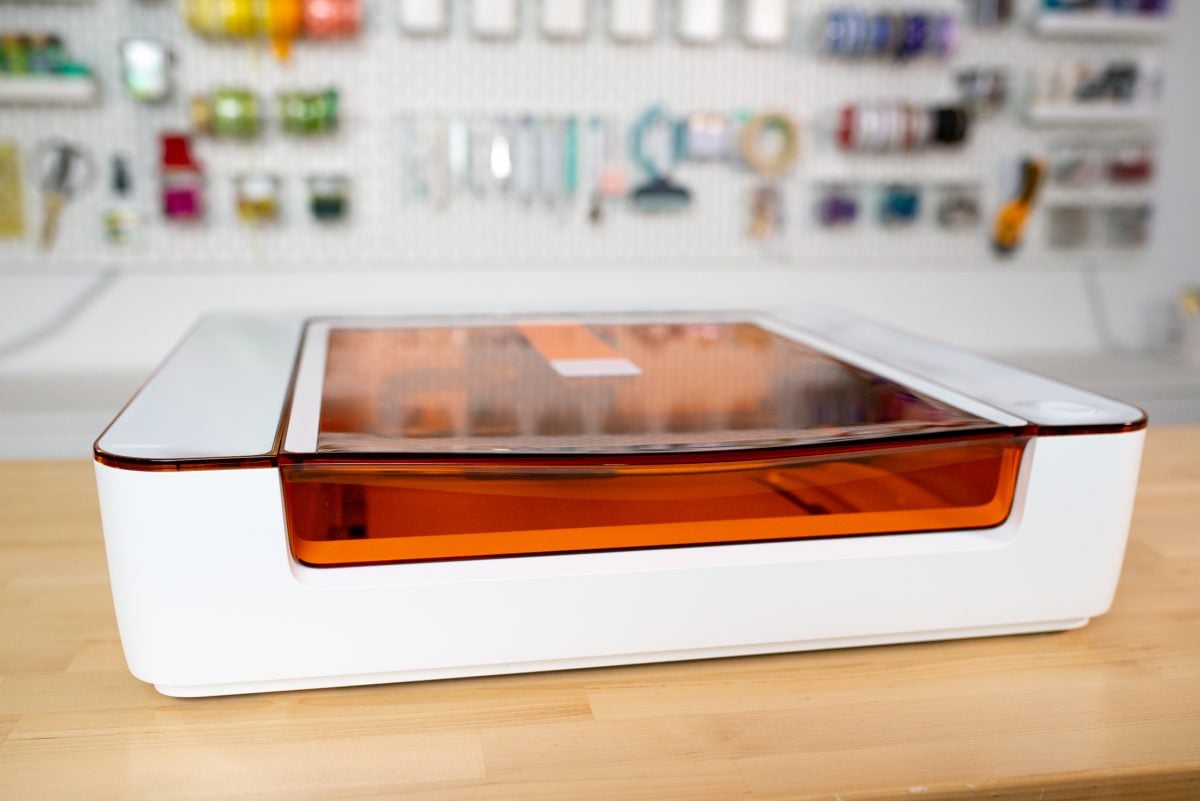
If you’re looking to do more beyond laser cutting and engraving, the xTool M1 Ultra gives you more capabilities. I don’t think this would replace your Cricut or Silhouette cutting machine (they are just purpose built for blade cutting and are so much faster), but if you don’t have one of those machines, the M1 Ultra will give you those capabilities. I recommend the M1 Ultra above the original M1.

And then if you are deciding between the two WeCreat machines, I prefer the Vista. The Vision is just a bit tall when the auto-lifting feature is engaged and anyone shorter than I am (I’m 5’6″) will either need a step stool or a lower table.
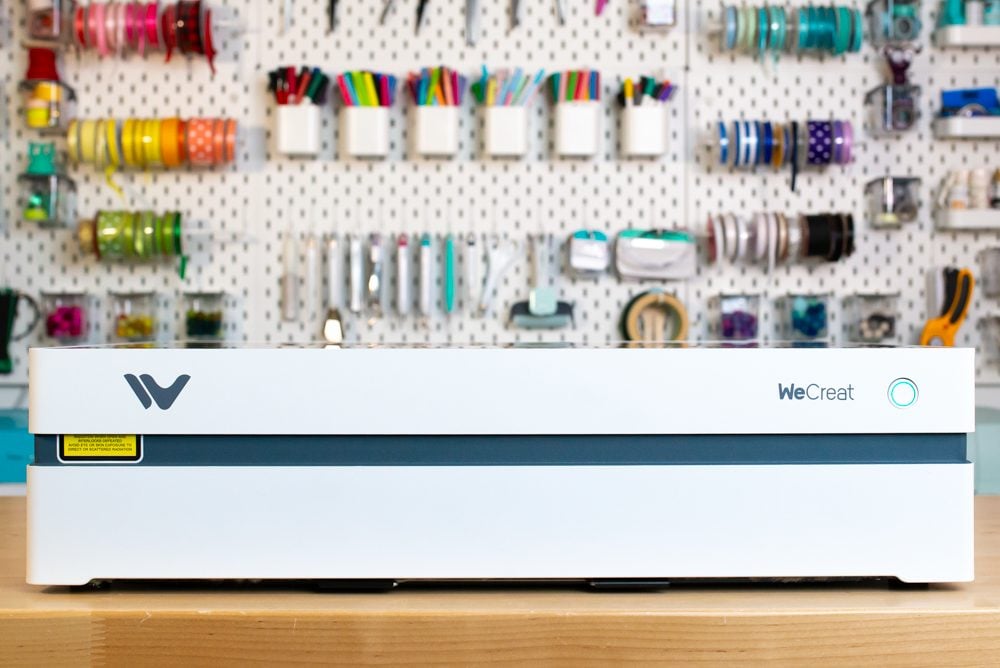
I hope this post gave you more information on which diode laser is right for your workspace! If you have any questions about this diode laser comparison, please let me know down in the comments. I’m happy to help you figure out which machine is best for your needs!




Comments & Reviews
Patti Kennedy says
I really want a laser but I have asthma. How bad are the fumes if you vent outside? I am pretty tech savy and my husband and I have a small craft business together. I like the idea of the Wecreate Vista but I worry that it doesn’t have a sealed box with the risers. I am really most interested in the laser in the M1 Ultra, would I be better off with the S1? Thanks! Patti